
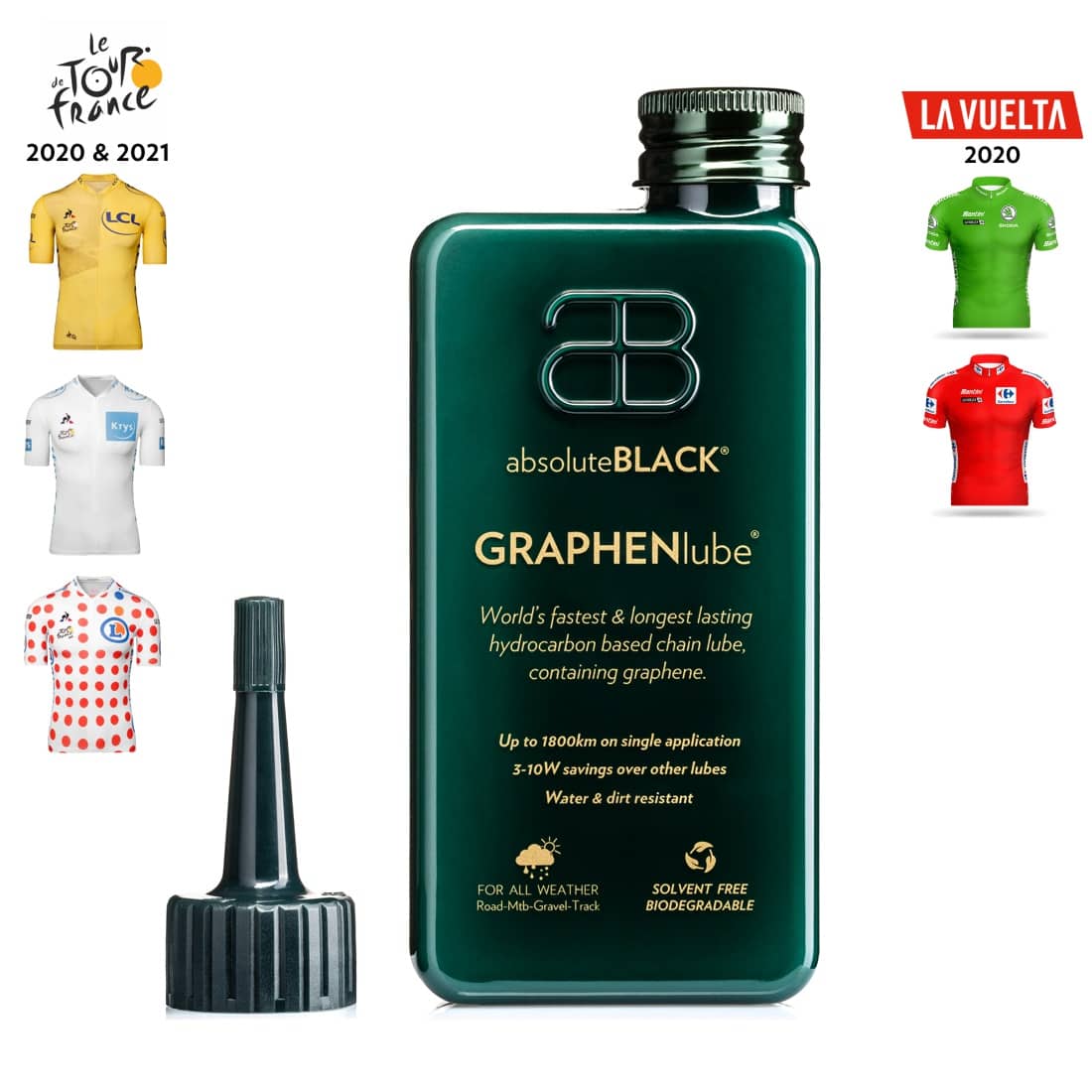
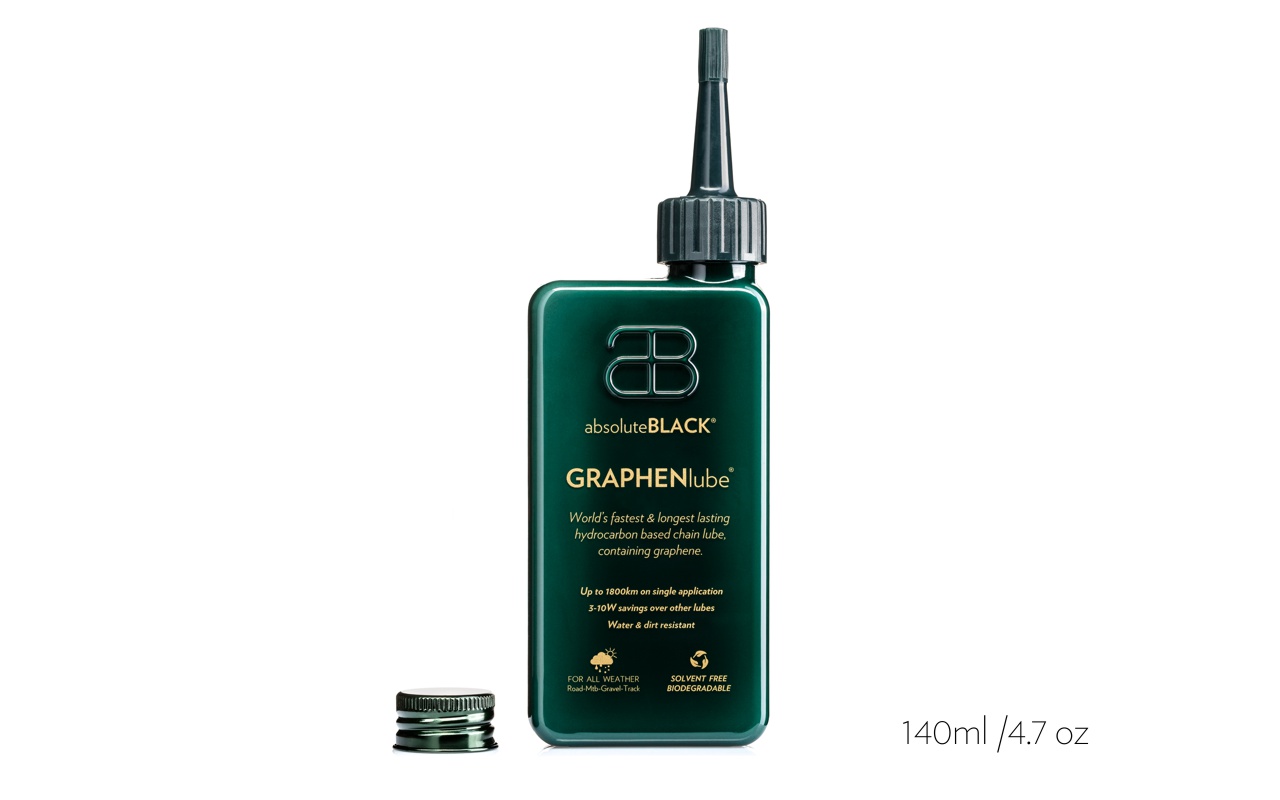

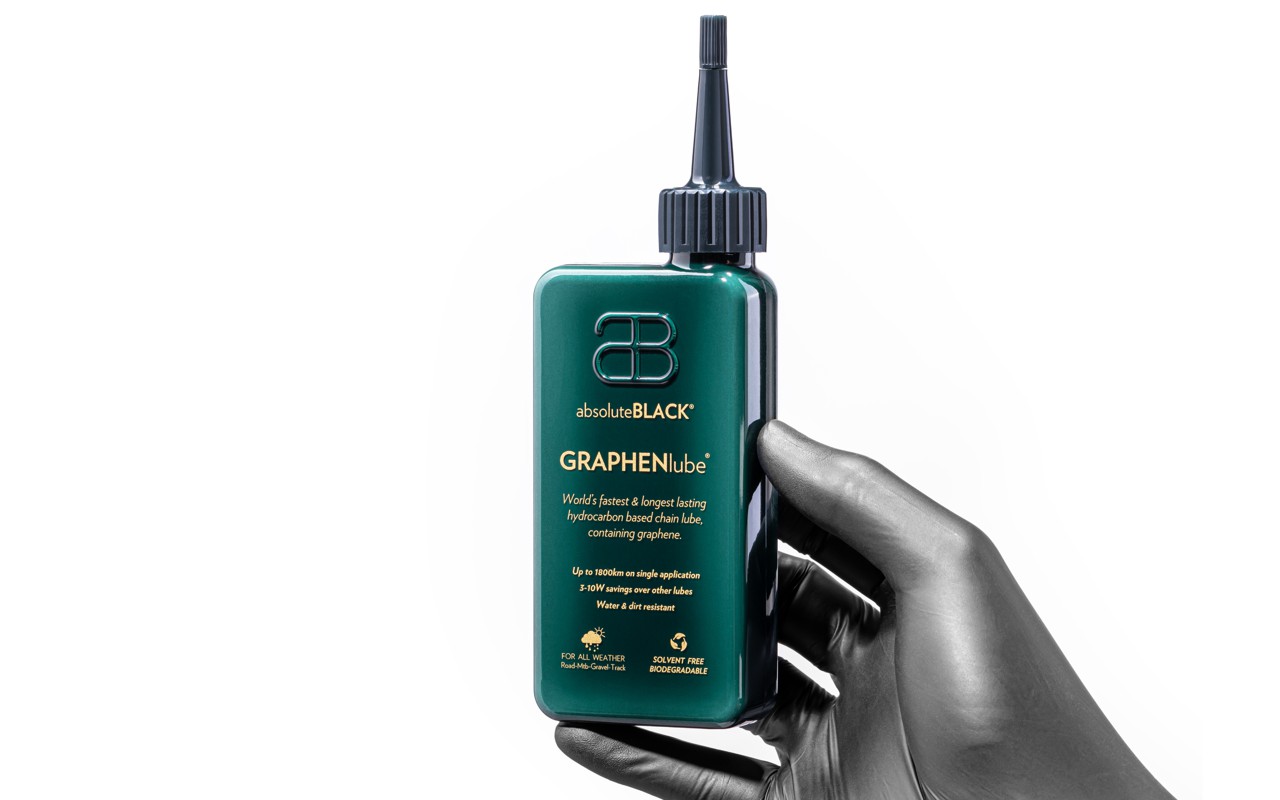

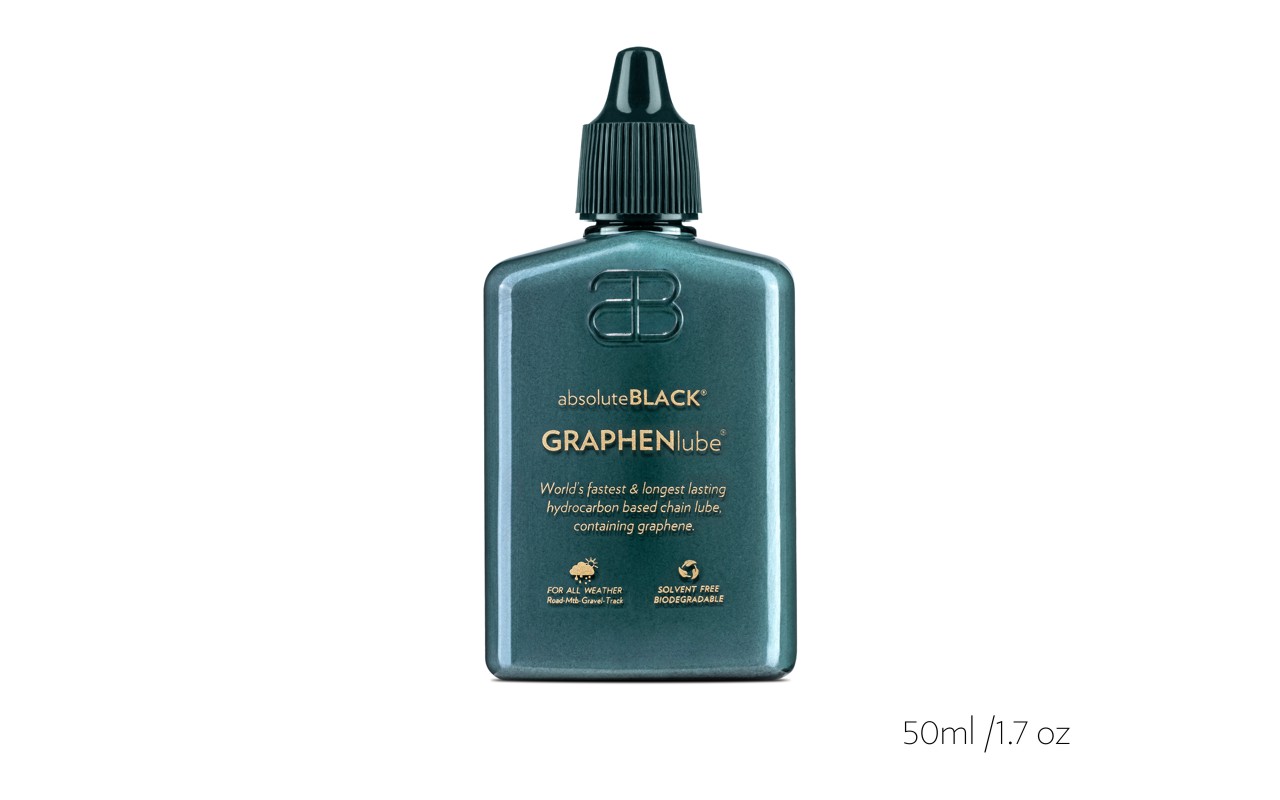


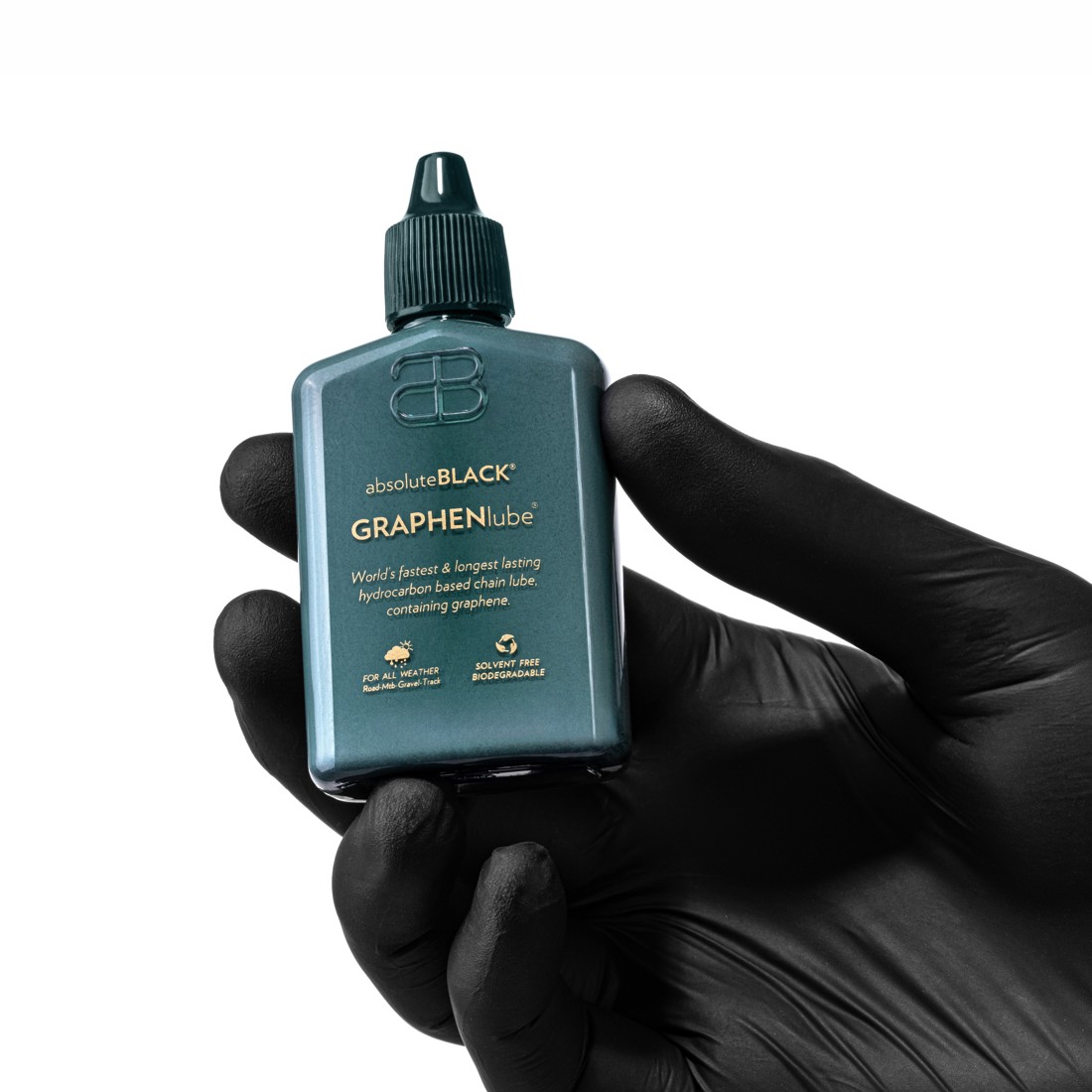
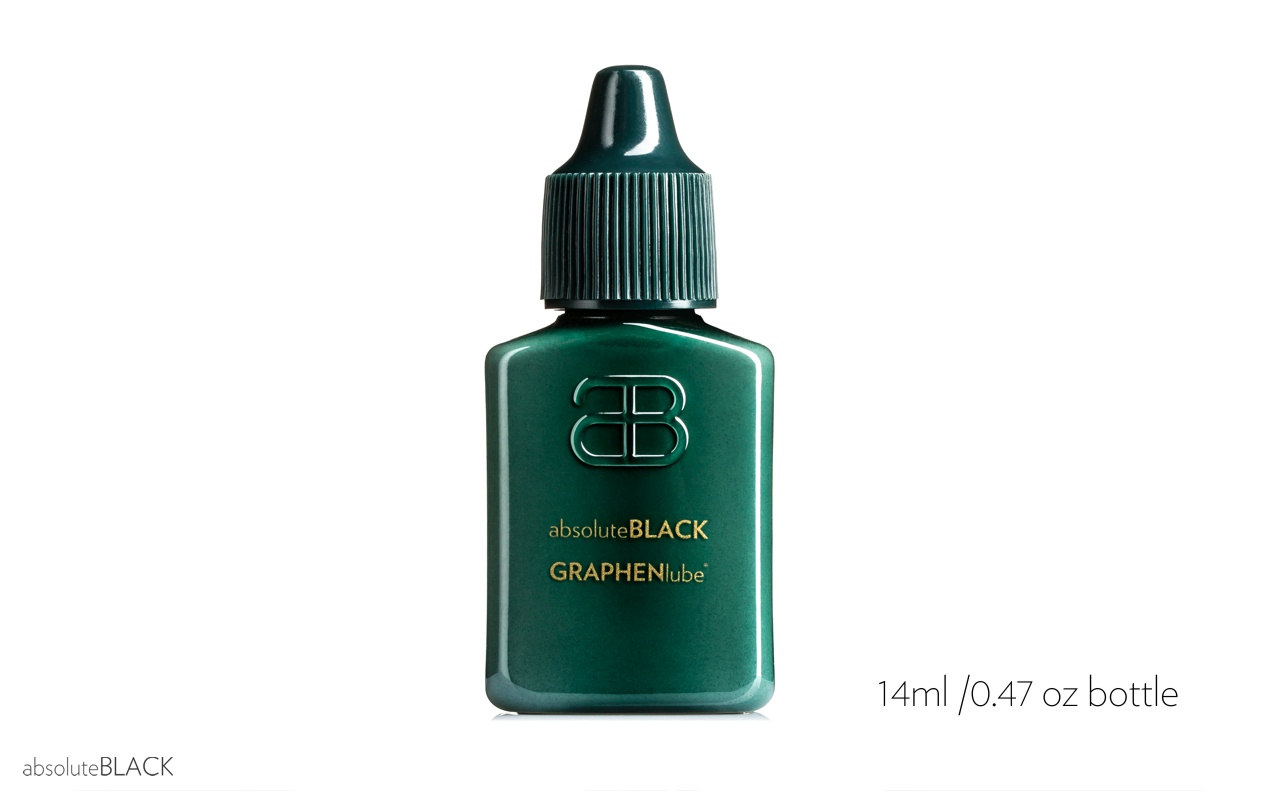

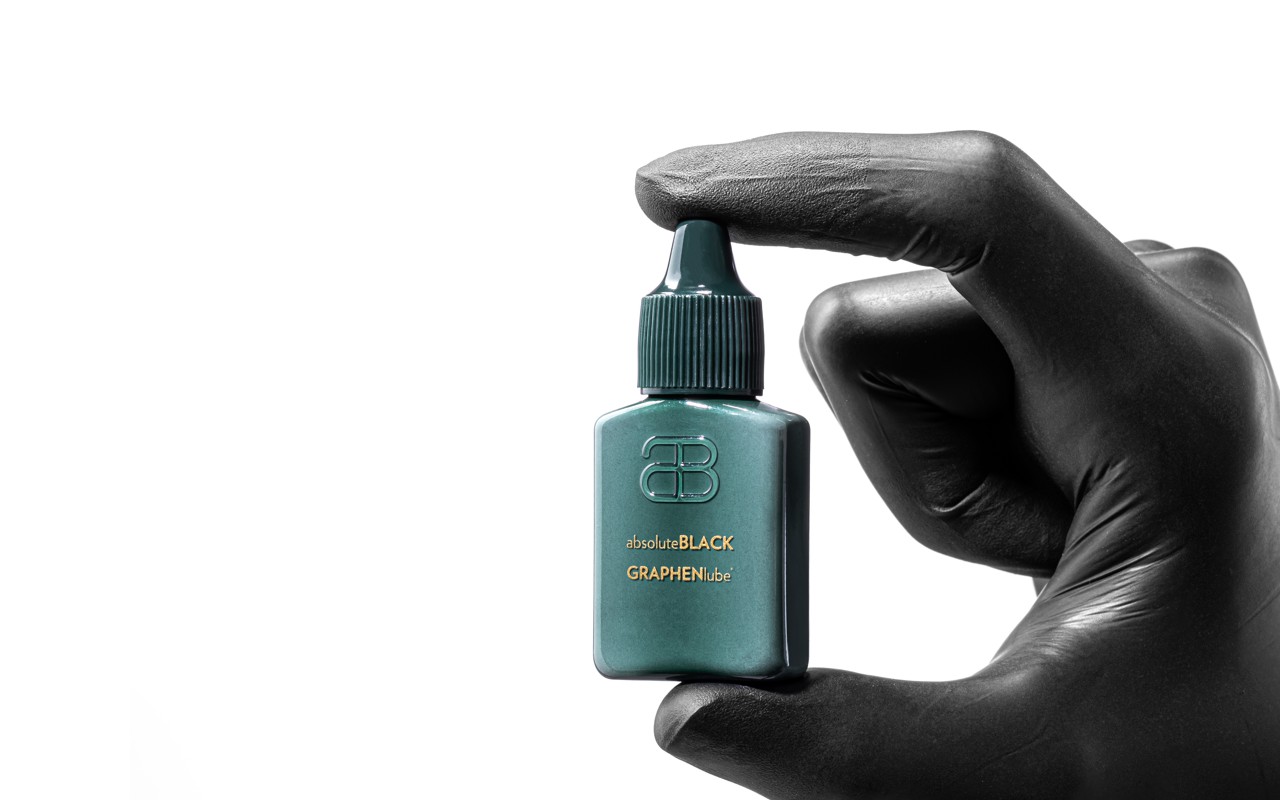

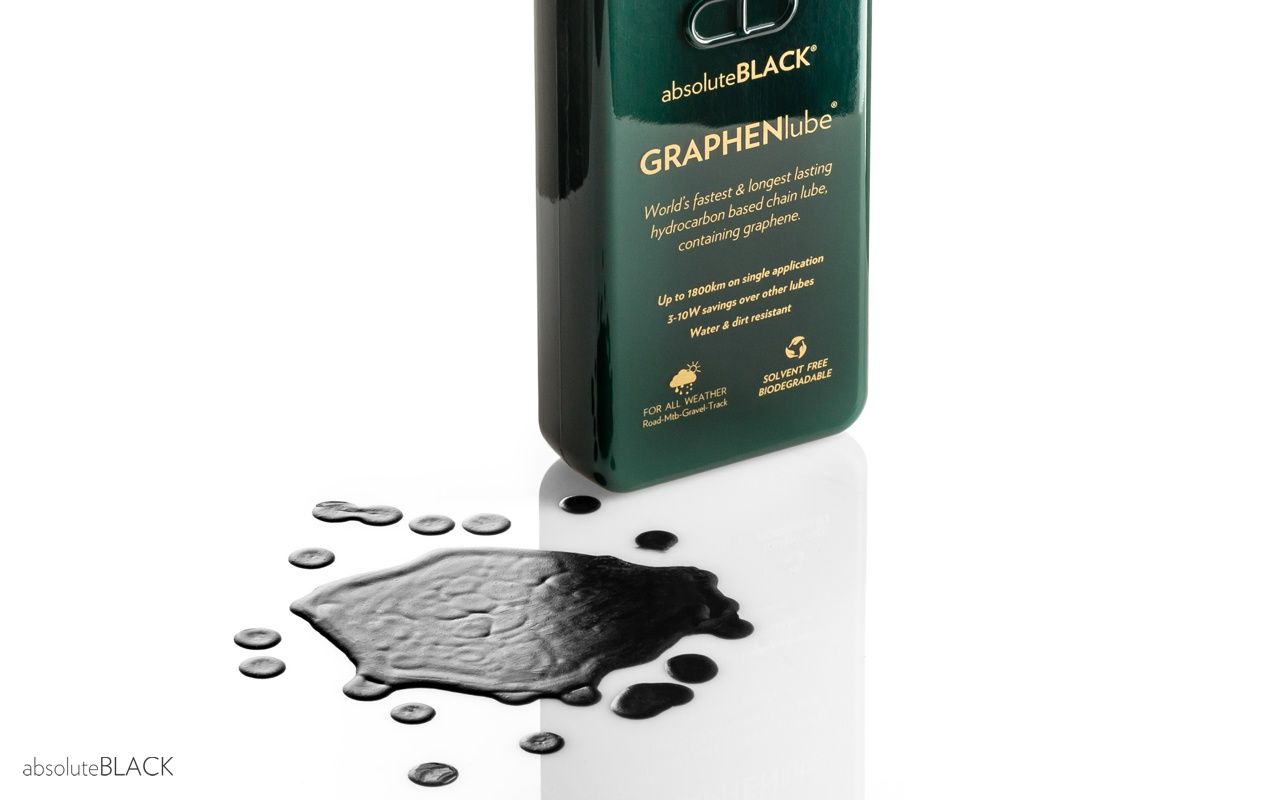

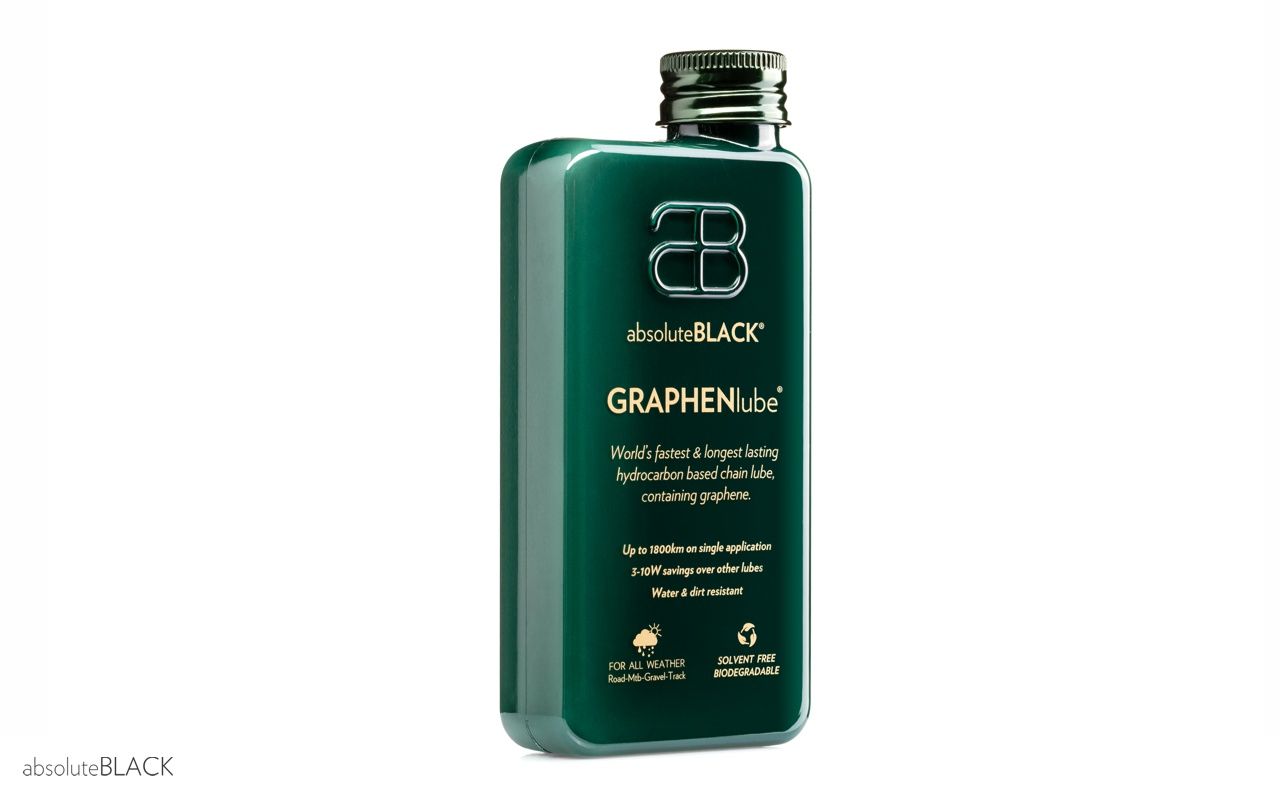

GRAPHENlube ® 2.0 Wax lubricant - efficiency redefined
Don't wait, order now.
Thanks for your rating.
Do you like this product? Share it with your friends!
The Ultimate bicycle chain lubricant. Winner of Yellow, White and Polka dot jersey in general classification of Le Tour de France 2020 & 2021 and winner of Red and Green jersey in general classification of La Vuelta 2020 . Most wanted lube by Pro riders. GRAPHENlube ® – World’s first hydrocarbon-based (wax) chain lubricant containing Graphene. It exhibits extraordinary durability at single application whilst maintaining impressively low friction for a prolonged period of time in both wet and dry conditions. It’s everything you can really wish for in lubrication. Up to 1800km on single application (dry conditions), 3-10W savings over other lubes. Perfect for Road, Triathlon, Gravel, Mtb and E-bike "The Ultimate" series is only available here on our website. Patented formula.
What’s new with 2.0
We have finally managed to break a "magic barrier" of 3W losses not only in dry conditions but also in wet for over 150km.This hasn't been achieved by any other lube to date. Other lubricants that get close to 3W barrier in dry lab conditions, tend to perform very poorly in wet, due to washing out, this can be clearly seen in Graph 1. after the 50KM mark. We managed to get below that number in dry and wet for the full duration of Tour de France stage. This is why so many pro riders use quietly our product despite official sponsorships.
You can also check GRAPHENlube ® coated ProTour chains for Shimano 11s Dura Ace and Sram Red AXS
Interested in chain Waxing? check our GRAPHENwax" I have used AB chain lube on my Cannondale since new. Just clicked over 2000km and chain is like new. I normally get about 1000ks from a chain. So far I'm believing this lube does what it claims to do."
" I REALLY noticed today just how smooth this GRAPHENlube is, and it's dead quiet. My buddy even told me after the ride today that he couldn't believe how quiet my chain was "
" This stuff is amazing. I apply it every week (I ride ~250 miles a week). I still have like 80% of the bottle, even after the initial treatment and 6 additional applications."
"Wonderful product will reorder when I've finally finished the bottle. Really felt and heard the difference on both road and MTB."
"Love it, thought very expensive but you can use it cleverly, one bottle last ages"
Supplier to Pro Tour Teams
absoluteBLACK is a supplier of GRAPHENlube ® to several Pro Tour Teams under non-disclosure agreements. Pro Tour teams usually sign very expensive sponsorship contracts with lubricant brands. However in many cases those products don't meet the demands of Pro Tour racing for various reasons. This is where we come in supplying our fully proven lubricant that contributed to winning hundreds of races.
|
Size |
14ml / 0.47oz , 50ml / 1.7oz , 140ml / 4.7oz |
|
Color |
When liquid: Light grey When solid: Black |
|
Composition |
Hydrocarbon (wax) based water emulsion containing special mix of high purity Graphene. it does not contain any harmful solvents |
|
Storage |
Store between 5-35°C (41-95°F) Do NOT allow to freeze. |
Because of the very complex manufacturing process the graphene lube is only produced in limited quantities at a time and will be sold on a first come, first served basis.
Advantages of GRAPHENlube ® 2.0- chain wax lubricant:
*Able to hold sub 5 Watts of frictional loss over 900km on a Single application (in dry, low dust road conditions. After immersive lubing)
*It gives you “free” power regardless the conditions- read more below.
*Extends life of your drivetrain, hence saving on replacement costs.
*Repels water and does not attract dirt
*Dry, paste like coating that can stay on the chain over 1800km (in dry, low dust road conditions. After immersive lubing)
*Unique black look of the lubricant when dry
*Safe- Does not contain any harmful solvents.
The Product
In simple terms it’s a “wax” based water emulsion, with a special mix of high purity graphene, that is liquid when you apply and becomes almost solid when it dries on the chain. Wax based lubricants exhibit far greater tolerance to water and dirt contamination, successfully separating moving chain parts from abrasion and filling in all the imperfections on friction surfaces. Graphene – the wonder material that is still not commonly used because of its incredibly high cost, is a great additive for a few reasons. It has extremely low friction coefficient in all the environments, is far stronger than any known material to a man and it can cling to metal protecting friction surfaces from excessive abrasion. Moreover, it repels the water and is not permeable to air reducing therefore oxidative stress on the metal surface. Even a single atom layer is enough to reduce the friction considerably.
It took us two years to find the right ratio of crumpled to non-crumpled graphene, size of graphene platelets, dispersion rate of agglomerates, concentration and finally figuring out a low friction hydrocarbon emulsion base that will stay on the chain for very long time and not chip away like paraffin wax is known for. The end result is a lubricant that on a single application will hold sub 5 Watts of frictional losses over 900km distance. We have created essentially a new category of performance lubricants.
But why should you care about this number?
For the same reason why Pro Tour teams are eager to use it. It gives you “free” power regardless the conditions.
Graphene is not graphite
Despite of the fact that both of these materials are only built from carbon atoms, the similarity ends here. Graphene possesses completely different mechanical and tribological properties to graphite. For example, graphite exhibits 0.1-0.2 COF (coefficient of friction) in very humid air, but 0.5-0.7 COF when air is dry, which is very high friction comparable to steel on steel sliding without lubrication. Graphene, on the other hand, is very stable across full spectrum of humidity with 0.1-0.2 COF. Graphene also possesses incredible mechanical strength allowing it to effectively separate metal surfaces and suppressing wear rate by 1-2 orders of magnitude in comparison to graphite. To sum up, using graphite instead of graphene in the same solution, would produce completely adverse results.
Lab test findings – Not generating watts, but reducing watt losses
Graph1. Power Loss vs distance travelled among different lubricants in dry and wet conditions. Results from our own, one of a kind testing machine. All chains were prepared with single lube application according to manufacturer instructions. Friction test at 250W resistance, 100rpm cadence, 40km/h speed, 25deg C and 25% humidity. The test continued until chain reached 8W losses. Chains and testing machine had 5km warmup/break-in period. First 50km on the graph where recorded in DRY conditions. Without stopping the machine after 50km mark chains were continuously sprayed with liquid to simulate wet road conditions. The liquid contains water, trace amounts of diesel oil and small amounts of micronized alumina powder to simulate the contaminants which get onto the chain when riding in the rain.
This test reveals how lubricants behave in dry as well as in wet conditions, and how their friction changes in relation to the distance cycled.. The higher the number the more Watts you are losing. While some lubes can achieve relatively low friction in dry laboratory conditions in the first 50km, everything changes when water spray is introduced. Most lubes are washed away relatively fast, causing an increase in friction and wear. The ideal lubricant should not only perform well in dry laboratory conditions, but also be able to withstand less favorable weather situations without a significant increase in friction.
To understand why this test is so important, let’s look how power is generated on the bike. When you press on the pedals, this force/torque is then transferred through the chain to the rear hub. If you happen to own Crank based power meter you can see power number represented in Watts. However, power generated at the crank does not equal power at the hub due to frictional losses in the drivetrain. The majority of those losses are due to the articulation of hundreds of chain link elements per second. Therefore, the above graph shows how much less power is delivered to the rear wheel compared to the power at the crank. Or in other words you would have to increase power at the crank if you want to retain the same speed with passing kilometers. Even the best lubricated chain in perfect laboratory conditions still generates about 3-4W of frictional losses from the start. Shimano Dura-Ace chain out of the box for example, varies between 6.5-13W. It’s not possible to avoid this loss.
But what we can do is to minimize this loss and keep it low for a long time. In other words, it’s “free” power you (re-)gain at the rear wheel while pushing exactly the same watts at the crank. We don’t create extra watts, but we regain part of the inevitable losses due to drivetrain friction.
We have also conducted a simple test comparing lubricants where we used a rider instead of an electric engine to propel the cranks. On the above video you can see how big role lubricants play in transmitting power to the rear wheel. It's an exact same setup as riding on a turbo-trainer (Imagine those Zwift gains!). By mere change of the lubricant, the rider in this test gained 7.3W. Or in other words had to push less by 7.3W (that is 12N or 1.2kg / 2.65lbs) on each pedal stroke while keeping the same cadence and gear at fixed 250W power output.
How to lubricate your chain with GRAPHEN lube
FOR EVERYDAY USE (drip application):
1. Wipe the chain with a cloth and some degreaser which will not leave a residue and which will remove any previously used grease or lubricants. (Use gloves)
2. Shake the bottle. Apply the lube continuously to the inside of a chain turning cranks backwards. One drop per roller Is enough.
3. Let the lube dry for a min. of 2h before riding, ideally overnight. To prolong the lifespan of the coating, you can repeat the drip application (2) when the first layer has dried (min. 2h)
FOR RACE DAY/ highest performance (full submersion application)
1. Take the chain off the bike or use a brand new chain and clean it using a solvent (like White Spirit or mineral turps) by immersing the chain completely in the solvent for 20-60min using the poly bag for example (Use gloves). Shake the bag with the chain for 1 min. Take the chain out and let it fully dry (2-12h).
2. Fully immerse the chain in the lube (use a second poly bag) for about 2-10min. You will need to pour at least 30ml of the lube into the bag, ideally 50ml or more (you will recycle the rest back to the bottle). You should gently shake and articulate the links through the bag.
3. Remove the chain, hang it in place with good airflow, not touching anything and let it dry completely (Ideally overnight). With full submersion application, you will use up about 10-15ml of lube - the rest you will pour back into the bottle to be reused. You need min 2x 14ml bottle, or one of the bigger bottles, to do a full immersion application. We recommend wearing gloves and safety glasses during the full submersion procedure.
*For absolute maximum Racing performance where every watt counts, re-lube (by dripping) every 600km or sooner in dry conditions and after every wet ride. If you race, apply a day before the race.
*For everyday riding you can re-lube (by dripping) between 900-1200km in dry road conditions and after 3-4 rides in wet conditions or when you hear chain becomes dry.
*Always apply to a dry chain.
In case of eye contact, flush with lukewarm water. If ingested seek medical advice. Keep out of the reach of children. Product is not flammable - contains water.
Watch the video to find out more
GRAPHENlube proves again to be the best lubricant on the market. Road.cc tested GRAPHENlube vs CeramicSpeed v2 vs Revolube
Share your Oval chainring photos with us on Instagram: #OvalThis #absoluteBLACK #OVALREVOLUTION
Designed in UK. Manufactured in Poland (EU).
GRAPHENlube ® is a registered trademark of absoluteBLACK. Lubricant composition protected by USA and EU patents and pat. pend. applications US 11118058, EP 3683293, EP 3683294, ES 2875561T3, US 20200231814A1, EP3683292. Bottle shape protected by design patent. #GRAPHENlube, #chainlube, #chainwax
Safety Data Sheet for this product is not required (according to REACH regulations) but it can be provided on request.